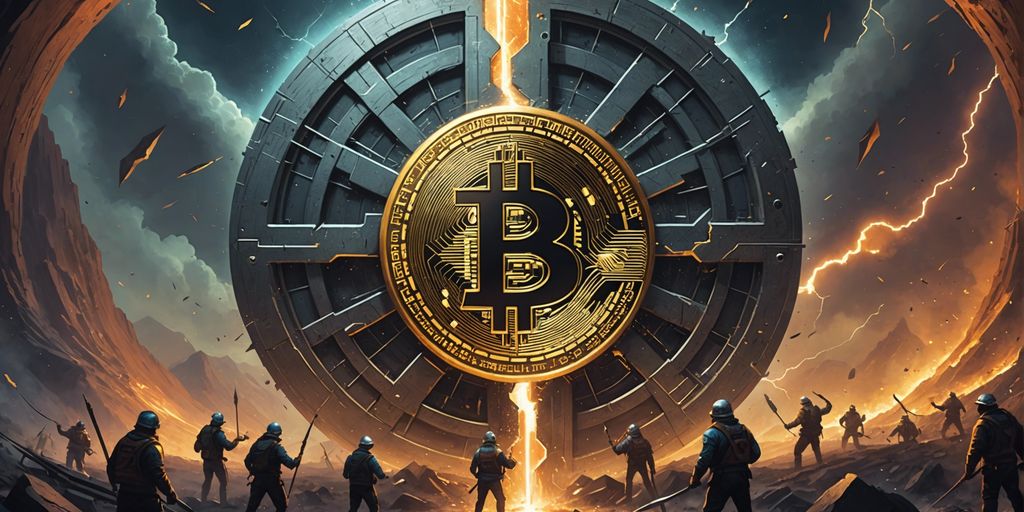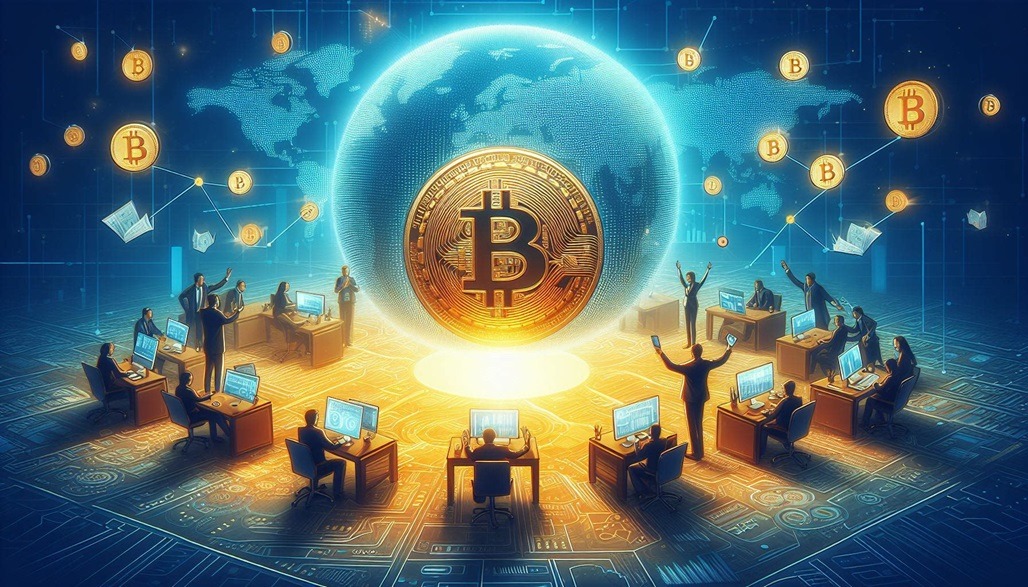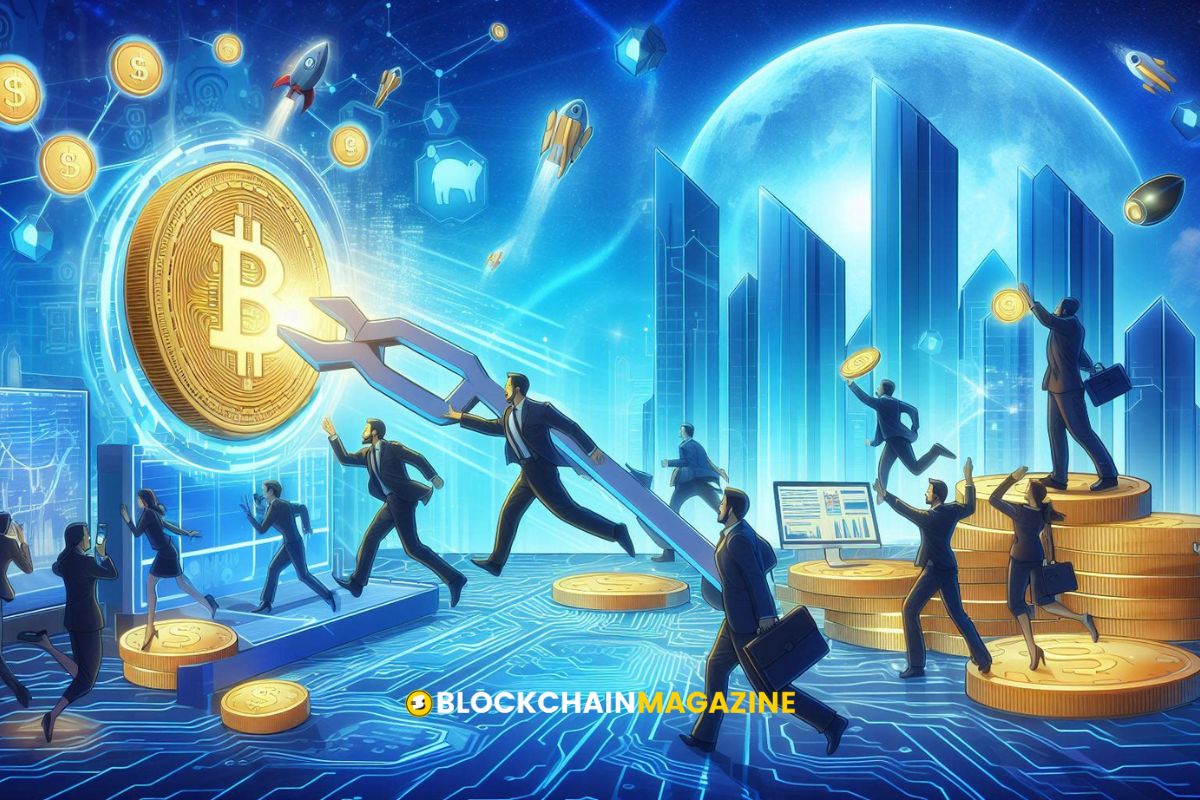The Shrinking Bitcoin Reward: How Will Miners Adapt to a Finite Supply Landscape?
As Bitcoin continues to gain prominence in the financial world, one crucial aspect that miners and investors closely monitor is the periodic reduction in mining rewards, known as the Bitcoin Halving. This event, which occurs approximately every four years, reduces the reward for mining a new block by 50%, thereby influencing the supply and value of Bitcoin. With the next halving on the horizon, understanding its implications is essential for anyone involved in the cryptocurrency ecosystem.
Key Takeaways
- Bitcoin Halving reduces the mining reward by 50% every 210,000 blocks, impacting the supply of new Bitcoins entering the market.
- The scarcity effect created by halving events tends to put upward pressure on Bitcoin’s price, making it more valuable.
- Miners are adapting to reduced rewards through advanced mining equipment, energy-efficient practices, and forming mining pools.
- Market reactions to halving events vary, with corporate and individual investors responding differently based on their involvement in the crypto ecosystem.
- The future of Bitcoin mining will be shaped by sustainability concerns, regulatory changes, and technological innovations.
Understanding Bitcoin Halving
Mechanics of Bitcoin Halving
The Bitcoin Halving involves a 50% reduction in the reward provided to Bitcoin miners for successfully processing cryptocurrency transactions. These transactions are added to the public digital ledger, the blockchain. To sustain Bitcoin’s blockchain and ecosystem, miners use advanced computer equipment to solve a complex mathematical puzzle through the ‘Proof of Work’ process.
Historical Halving Events
Halving events have historically been followed by significant price increases in Bitcoin. For example, after the first halving in 2012, the price of Bitcoin rose from $12 to over $1,000 within a year. Similarly, after the second halving in 2016, the price of Bitcoin rose from $650 to over $20,000 in 2017.
Impact on Bitcoin Supply
Bitcoin’s unique feature of having its mining rewards halved approximately every four years contributes to the perception of scarcity. This halving process reduces the rate at which new Bitcoins are created, which, according to proponents, can drive up demand and, consequently, prices.
Economic Implications of Reduced Bitcoin Rewards
Scarcity and Value
The reduction in mining rewards reduces the supply of new Bitcoins entering the market, which, in turn, puts upward pressure on the price of Bitcoin. The reduction in supply is also said to create a scarcity effect, which makes Bitcoin more valuable. This effect is one of the factors driving the price of Bitcoin higher during the halving periods.
Market Reactions
The last time this happened—in July 2016, when the reward dropped from 25 bitcoins to 12.5 bitcoins—the crypto market wasn’t nearly as popular. Back then, bitcoin traded in the mid-$600s. Now, though, with greater attention on its contracting issuance rate and finite supply, bitcoin’s price could rocket up the charts. While some argue the halving is “priced in” (i.e., everybody knows it’s going to happen), others suspect the shrinking reward will make buying bitcoin more urgent.
Long-term Projections
While miners currently receive 12.5 bitcoins (market value: $87,000) for adding each new block of transactions, the network will programmatically adjust to provide a smaller payout, a reward of just 6.25 bitcoins. This reduction, which occurs every 210,000 blocks, is called the “halving,” or sometimes, the “halvening.”
Larger blocks also mean there could be non-full blocks, which would lead to low transaction fees. While this certainly helps scalability, it could conversely lower the incentives for miners due to lower transaction fees, particularly as the block subsidy (the other portion of the rewards miners receive) continues to get cut in half every four years. If miners discontinue operation, this decreases the security of Bitcoin’s network.
Technological Adaptations by Miners
Advanced Mining Equipment
The evolution of bitcoin mining technology has been remarkable. Initially, miners could use just their laptops to mine bitcoin, but this is no longer the case. Today, powerful mining hardware is essential for profitability. Application-specific integrated circuits (ASICs) are designed to serve a single specific purpose, making them the best option for cryptocurrency mining. However, GPUs are still viable in some networks, depending on the mining difficulty and algorithm.
Energy Efficiency
As more miners join the game, validating blocks requires more computing power, making mining increasingly expensive. To address this, miners are focusing on energy-efficient solutions. This includes optimizing hardware and software to reduce electricity consumption and exploring renewable energy sources to power mining operations.
Mining Pools
Mining can become too expensive for individual miners due to the high costs of hardware and electricity. Joining a mining pool can help mitigate these costs. In a mining pool, miners combine their computational resources to increase their chances of validating the next block. This collective approach makes mining more accessible and profitable for individual miners.
The better the possibilities to validate the next block, the more attractive mining becomes for both individual and corporate participants.
Market Speculation and Investor Behavior
Corporate vs. Individual Investors
The Bitcoin market has seen a diverse range of participants, from individual investors to large corporations. Each group brings its own psychology and strategies to the table. Corporations often have more resources and can influence market trends significantly, while individual investors might be driven by emotions such as fear and greed. This dynamic creates a complex landscape where both types of investors impact Bitcoin’s price movements.
Speculative Trading
A significant portion of Bitcoin’s price movements is driven by speculative trading. Short-term traders often contribute to price volatility, with rapid price swings triggered by market sentiment, news events, and trading algorithms. Speculative behavior can lead to price bubbles, but it can also be a source of short-term profits for traders. This speculative nature of the market makes it both exciting and risky.
Market Sentiment
Market sentiment plays a crucial role in Bitcoin’s price dynamics. It reflects the collective opinion of market participants on the future performance of Bitcoin. Positive sentiment can drive prices up, while negative sentiment can lead to sharp declines. Understanding market sentiment is essential for both traders and investors to make informed decisions.
The Bitcoin market is influenced by a variety of factors, including speculative trading and market sentiment. These elements create a volatile environment that requires careful navigation by all participants.
Challenges and Opportunities for Miners
Increased Competition
As the Bitcoin network grows, the competition among miners intensifies, leading to rising hashing difficulty. This makes it increasingly challenging for individual miners to earn revenue. To cope with this, many miners join large mining pools, which unfortunately can lead to a centralization of mining power.
Profitability Concerns
The profitability of Bitcoin mining is often influenced by the cost of production and the price of Bitcoin. Currently, the price of Bitcoin is below the cost of production for many miners, exacerbated by the rise in mining complexity. The upcoming halving event in 2024 will further reduce the rewards, making it crucial for miners to find ways to reduce costs and increase efficiency.
Strategic Adjustments
Miners are constantly looking for ways to adapt to the changing landscape. Some strategies include investing in more energy-efficient mining equipment and exploring alternative cryptocurrencies. However, these alternatives can be volatile and may require additional investments in new mining rigs.
Miners strategically timing sales for returns can capitalize on Bitcoin surges amid exchange transfer increases. This requires careful planning and market analysis to maximize profitability.
| Challenge | Opportunity |
|---|---|
| Rising hashing difficulty | Joining mining pools |
| High cost of production | Investing in energy-efficient equipment |
| Reduced rewards post-halving | Exploring alternative cryptocurrencies |
Future of Bitcoin Mining
Sustainability of Mining
The sustainability of Bitcoin mining is a growing concern as the environmental impact of energy consumption becomes more evident. Miners are increasingly looking for renewable energy sources to power their operations. Adopting green energy solutions not only helps in reducing the carbon footprint but also makes mining more cost-effective in the long run.
Regulatory Environment
The regulatory landscape for Bitcoin mining is evolving. Governments around the world are starting to implement policies to control and monitor mining activities. This could range from outright bans to incentivizing the use of renewable energy. Miners must stay updated with these regulations to avoid legal complications and ensure compliance.
Innovations in Mining Technology
Technological advancements are crucial for the future of Bitcoin mining. The development of more efficient mining hardware and software can significantly reduce operational costs. Innovations such as quantum computing and AI could revolutionize the mining process, making it more efficient and sustainable.
The future of Bitcoin mining will be shaped by a combination of technological innovation, regulatory changes, and the industry’s ability to adapt to a finite supply landscape.
The future of Bitcoin mining is evolving rapidly, with new technologies and regulations shaping the landscape. Stay informed and ahead of the curve by visiting our website for the latest insights and updates. Don’t miss out on the opportunity to be part of the next big wave in cryptocurrency!
Conclusion
The Bitcoin halving event represents a significant milestone in the cryptocurrency’s lifecycle, fundamentally altering the dynamics of supply and demand. As the reward for mining new blocks is halved, the scarcity of new Bitcoins entering the market increases, potentially driving up their value. This cyclical reduction in rewards not only underscores Bitcoin’s deflationary nature but also challenges miners to adapt to a landscape where rewards are diminishing. While the increased value of Bitcoin may offset some of the impacts, miners must continually innovate and optimize their operations to remain profitable. The halving event, therefore, serves as a critical juncture for the Bitcoin ecosystem, influencing market behavior, miner strategies, and the overall perception of Bitcoin’s value.
Frequently Asked Questions
What is Bitcoin halving?
Bitcoin halving is an event that occurs every 210,000 blocks, reducing the reward for mining new blocks by 50%. This process helps control the supply of Bitcoin and occurs approximately every four years.
How does Bitcoin halving affect miners?
Bitcoin halving reduces the reward miners receive for adding new blocks to the blockchain. While this decreases the immediate earnings for miners, the reduction in supply can drive up Bitcoin’s price, potentially balancing the impact.
When have previous Bitcoin halvings occurred?
Previous Bitcoin halvings have occurred in 2012, 2016, and 2020. Each event reduced the mining reward by half, from 50 BTC in 2009 to 6.25 BTC in 2020.
Why is Bitcoin considered scarce?
Bitcoin is considered scarce because its supply is capped at 21 million coins, and the halving process further reduces the rate at which new Bitcoins are created. This scarcity can increase demand and drive up prices.
What technological adaptations do miners use to cope with halving?
Miners use advanced mining equipment, improve energy efficiency, and join mining pools to cope with the reduced rewards from halving. These strategies help maintain profitability despite the lower payouts.
How does market speculation impact Bitcoin prices during halving periods?
Market speculation can significantly impact Bitcoin prices during halving periods. Some investors buy Bitcoin in anticipation of price increases due to reduced supply, while others may sell off, leading to volatility in the market.
Stay informed with daily updates from Blockchain Magazine on Google News. Click here to follow us and mark as favorite: [Blockchain Magazine on Google News].
Get Blockchain Insights In Inbox
Stay ahead of the curve with expert analysis and market updates.
latest from tech
Disclaimer: Any post shared by a third-party agency are sponsored and Blockchain Magazine has no views on any such posts. The views and opinions expressed in this post are those of the clients and do not necessarily reflect the official policy or position of Blockchain Magazine. The information provided in this post is for informational purposes only and should not be considered as financial, investment, or professional advice. Blockchain Magazine does not endorse or promote any specific products, services, or companies mentioned in this posts. Readers are encouraged to conduct their own research and consult with a qualified professional before making any financial decisions.

 Bitcoin
Bitcoin  Ethereum
Ethereum  Tether
Tether  XRP
XRP  Solana
Solana  Dogecoin
Dogecoin  USDC
USDC  Lido Staked Ether
Lido Staked Ether  Cardano
Cardano  TRON
TRON  Avalanche
Avalanche  Chainlink
Chainlink  Toncoin
Toncoin  Wrapped stETH
Wrapped stETH  Shiba Inu
Shiba Inu  Sui
Sui  Wrapped Bitcoin
Wrapped Bitcoin  Hedera
Hedera  Stellar
Stellar  Polkadot
Polkadot  Hyperliquid
Hyperliquid  WETH
WETH  Bitcoin Cash
Bitcoin Cash  LEO Token
LEO Token  Uniswap
Uniswap  Litecoin
Litecoin  Pepe
Pepe  NEAR Protocol
NEAR Protocol  Wrapped eETH
Wrapped eETH  Ethena USDe
Ethena USDe  Aave
Aave  Internet Computer
Internet Computer  Aptos
Aptos  USDS
USDS  Cronos
Cronos  POL (ex-MATIC)
POL (ex-MATIC)  Mantle
Mantle  Ethereum Classic
Ethereum Classic  Render
Render  Bittensor
Bittensor  Monero
Monero  MANTRA
MANTRA  Artificial Superintelligence Alliance
Artificial Superintelligence Alliance  WhiteBIT Coin
WhiteBIT Coin  Arbitrum
Arbitrum  Dai
Dai  Filecoin
Filecoin 



